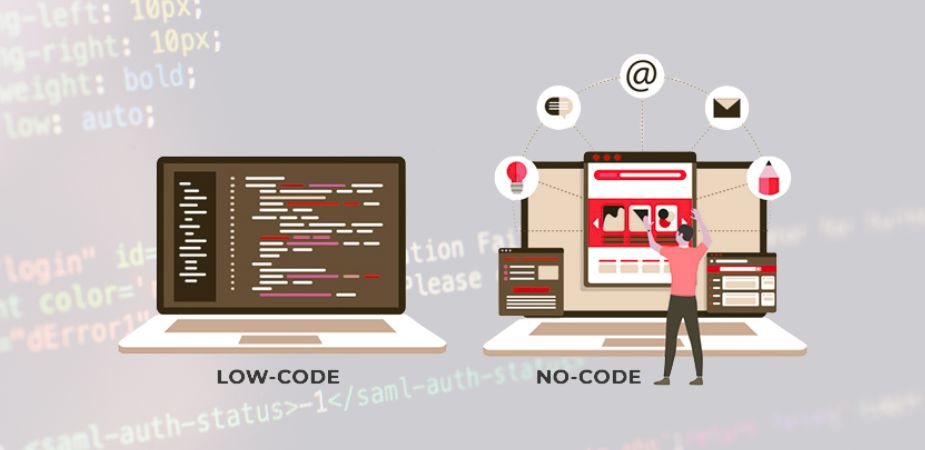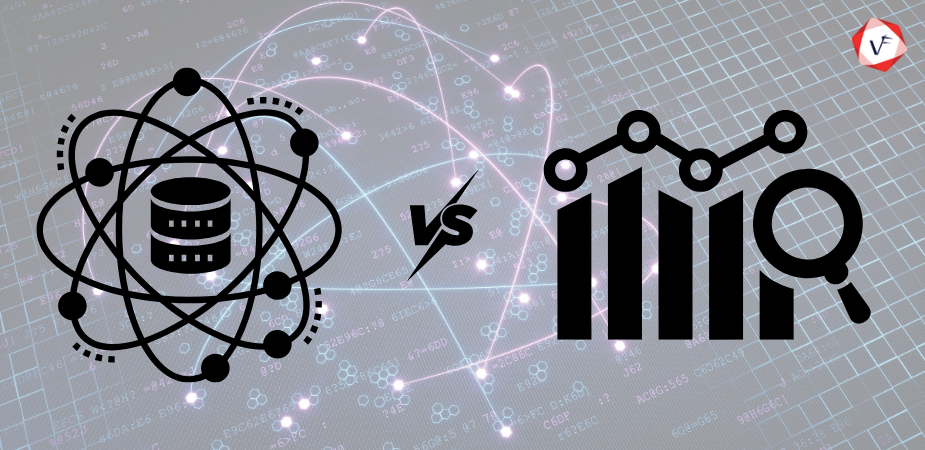As businesses strive to enhance productivity and efficiency in their increasingly competitive fields, the demand for automation solutions has surged. Two significant players in this arena are Robotic Process Automation (RPA) and Business Process Management (BPM). While both RPA and BPM serve the purpose of streamlining operations, they differ fundamentally in their approach, functionality, and scope of automation. Understanding these distinctions is essential for organizations looking to choose the right tool to meet their specific needs. In this article, we’ll take a look at the core differences between RPA and BPM, examining their unique characteristics, ideal use cases, and how they complement each other when used together.
Understanding RPA: Robotic Process Automation
Robotic Process Automation (RPA) refers to the use of software robots, or “bots,” to mimic human actions within digital systems. RPA bots are designed to interact with applications, systems, and websites in a manner similar to how a human employee would. RPA primarily focuses on automating repetitive tasks and manual processes, such as data entry, data extraction, form filling, and simple decision-making, without altering the underlying systems or workflows. The key features of RPA include:
- Task Automation: RPA automates tasks that involve repetitive, rule-based actions, enabling it to handle various back-office processes efficiently.
- Quick Implementation: Since RPA operates at the surface level and interacts with existing applications, it typically requires minimal changes to an organization’s IT infrastructure.
- Non-Intrusive: RPA bots work on top of existing systems, making RPA a non-intrusive solution that doesn’t require significant backend modifications.
- Data Integration: RPA tools can integrate data across multiple systems and applications, minimizing errors and improving data consistency.
How RPA works relies on three primary components:
Recorder: Captures and replicates human actions within applications.
Studio: Offers a development environment where automation processes can be designed.
Orchestrator: Manages and deploys bots, monitoring and scheduling their activities.
RPA bots typically work on individual tasks rather than full processes, meaning their scope of automation is relatively narrow.
Understanding BPM: Business Process Management
Business Process Management (BPM) is a holistic approach to optimizing and managing an organization’s workflows. BPM aims to improve efficiency, standardize processes, and reduce errors by analyzing and redesigning end-to-end processes across an organization. Unlike RPA, which focuses on specific tasks within a process, BPM focuses on improving the entire workflow and often requires restructuring processes to achieve optimized results. The key features of BPM include:
Process-Centric: BPM addresses complete business processes from start to finish rather than individual tasks, focusing on improving the efficiency of the entire workflow.
Workflow Automation: BPM automates workflows, reducing bottlenecks and establishing a seamless flow of information across departments.
Change Management: BPM provides tools and methodologies to manage process changes effectively and ensure consistency across various business functions.
Analytics and Optimization: BPM software typically includes analytics features, allowing companies to monitor and measure the efficiency of their processes.
How BPM works involves several steps, often referred to as the BPM lifecycle:
- Design: Mapping out existing processes, identifying inefficiencies, and designing an optimized process flow.
- Model: Creating a digital model of the process flow, usually with process modeling software.
- Execute: Implementing the process model within a BPM platform to begin automation.
- Monitor: Continuously monitor the process to identify any inefficiencies or areas for improvement.
- Optimize: Adjusting the process based on performance data to ensure continuous improvement.
While BPM software may automate some tasks within a process, its primary purpose is to enhance workflow coordination and improve process efficiency, rather than focus on individual task automation.
RPA vs BPM: Key Differences
Scope and Focus:
- RPA: Focuses on automating individual tasks that are rule-based and repetitive, such as filling out forms, transferring data, or updating records. RPA is primarily task-centric.
- BPM: Centers on automating and optimizing entire business processes from start to finish. BPM takes a process-centric approach, aiming to streamline workflows and improve overall efficiency.
Functionality:
- RPA: RPA operates at the user interface (UI) level, mimicking human actions without changing the underlying systems. It doesn’t require deep integration with the core IT infrastructure and is often quick to implement.
- BPM: BPM often involves restructuring and re-engineering processes, sometimes requiring significant changes in how data flows across departments. BPM integrates with core systems and requires more comprehensive planning and design.
Complexity and Implementation Time:
- RPA: RPA implementation is typically faster and simpler, as it only requires scripting of repetitive tasks. This non-intrusive nature makes it an excellent choice for short-term automation goals.
- BPM: BPM implementation is more complex and time-consuming because it involves comprehensive process mapping, modeling, and re-engineering. However, BPM yields long-term process improvements.
Adaptability to Changes:
- RPA: RPA bots are task-specific and, therefore, less adaptable to changes in workflows or systems. A change in the user interface of an application, for instance, may require reprogramming the bot.
- BPM: BPM platforms are designed with flexibility in mind, making it easier to adjust processes and workflows as organizational needs evolve.
Ideal Use Cases:
- RPA: Ideal for automating repetitive, high-volume tasks such as data entry, invoice processing, order tracking, and customer queries. RPA excels in tasks that involve minimal decision-making.
- BPM: Best suited for end-to-end process optimization, especially when processes span multiple departments. BPM is ideal for managing processes like supply chain management, employee onboarding, and regulatory compliance.
Decision-Making Capabilities:
- RPA: Typically limited to rule-based decision-making, meaning it can only handle tasks with predefined steps.
- BPM: Provides a structured approach to complex decision-making within workflows, allowing for automated and conditional branching of tasks based on business logic.
When to Use RPA vs. BPM?
Understanding when to use RPA versus BPM depends on the specific requirements of the organization. If the goal is to automate a high-volume, repetitive task with minimal need for flexibility, RPA is an ideal choice. For example, a finance department that needs to automate data entry in accounting software can benefit from RPA. RPA bots can handle repetitive functions across different systems, which is why many organizations use them for back-office tasks.
If the objective is to improve the efficiency and productivity of a workflow that involves multiple steps and departments, BPM is more suitable. For example, an HR department looking to streamline the employee onboarding process would find BPM helpful. By mapping and optimizing each stage of onboarding, BPM ensures a consistent, efficient, and adaptable process.
The Complementary Nature of RPA and BPM
While RPA and BPM serve distinct purposes, they can complement each other when used together. RPA can be embedded within BPM processes to handle specific tasks that are repetitive and time-consuming, such as data validation and form filling. When combined, RPA can enhance the speed and accuracy of task completion within BPM-managed workflows, resulting in a seamless, end-to-end automated process.
Example of RPA and BPM Working Together:
Consider a customer service process that involves the following steps:
- Customer Complaint Logging: A customer complaint is logged through an online form.
- Issue Verification: A customer service representative verifies the issue.
- Resolution Assignment: The verified complaint is assigned to the appropriate department for resolution.
- Resolution Follow-up: The customer service representative follows up to ensure customer satisfaction.
Using BPM, the organization can design and optimize this process flow, standardizing how each step is handled. At the same time, RPA can be used to handle specific tasks within this workflow. For instance, an RPA bot can extract information from the online form and populate it in the CRM system, minimizing the time taken to log each complaint.
Key Advantages of RPA and BPM
Advantages of RPA:
- Cost Savings: By automating repetitive tasks, RPA reduces the need for manual labor, saving on labor costs.
- Speed and Accuracy: RPA bots complete tasks faster than humans and with higher accuracy, minimizing errors in data entry and data processing.
- Scalability: RPA can handle increased workloads without adding additional staff, allowing organizations to scale their operations efficiently.
Advantages of BPM:
- Improved Efficiency: BPM helps optimize entire workflows, eliminating redundancies and streamlining business processes.
- Consistency: BPM standardizes workflows, ensuring that processes are completed the same way each time, which is particularly important in regulated industries.
- Flexibility: BPM platforms offer flexibility in process management, making it easy to adapt workflows as business needs evolve.
Choosing the Right Solution: RPA, BPM, or Both?
Selecting the right automation solution depends on an organization’s unique requirements. Here are some considerations:
Budget: RPA generally involves lower initial costs and can yield a quick return on investment by automating individual tasks.
Long-Term Goals: For companies looking to overhaul and optimize entire workflows, BPM offers a comprehensive solution that addresses process efficiency on a larger scale.
Immediate Needs: RPA is ideal for companies needing immediate automation of specific tasks, while BPM may be more appropriate for organizations with complex workflows requiring long-term solutions.
In many cases, an organization might benefit from combining both RPA and BPM. Integrating RPA into BPM workflows can yield a powerful automation strategy, maximizing both task-level and process-level efficiency.
Final Thoughts
Robotic Process Automation (RPA) and Business Process Management (BPM) are transformative automation tools, each offering distinct benefits tailored to different aspects of business operations. While RPA excels at automating individual, rule-based tasks, BPM focuses on managing and optimizing entire workflows. By understanding their differences and strengths, organizations can make informed decisions to implement the most suitable automation solutions. For businesses looking to embrace both RPA and BPM, Vofox offers comprehensive services that effectively integrate task-level and process-level automation. Vofox’s RPA and BPM services provide a tailored approach, helping organizations unlock their full potential in automation and achieve significant efficiency gains. Get in touch with us to find out more.





